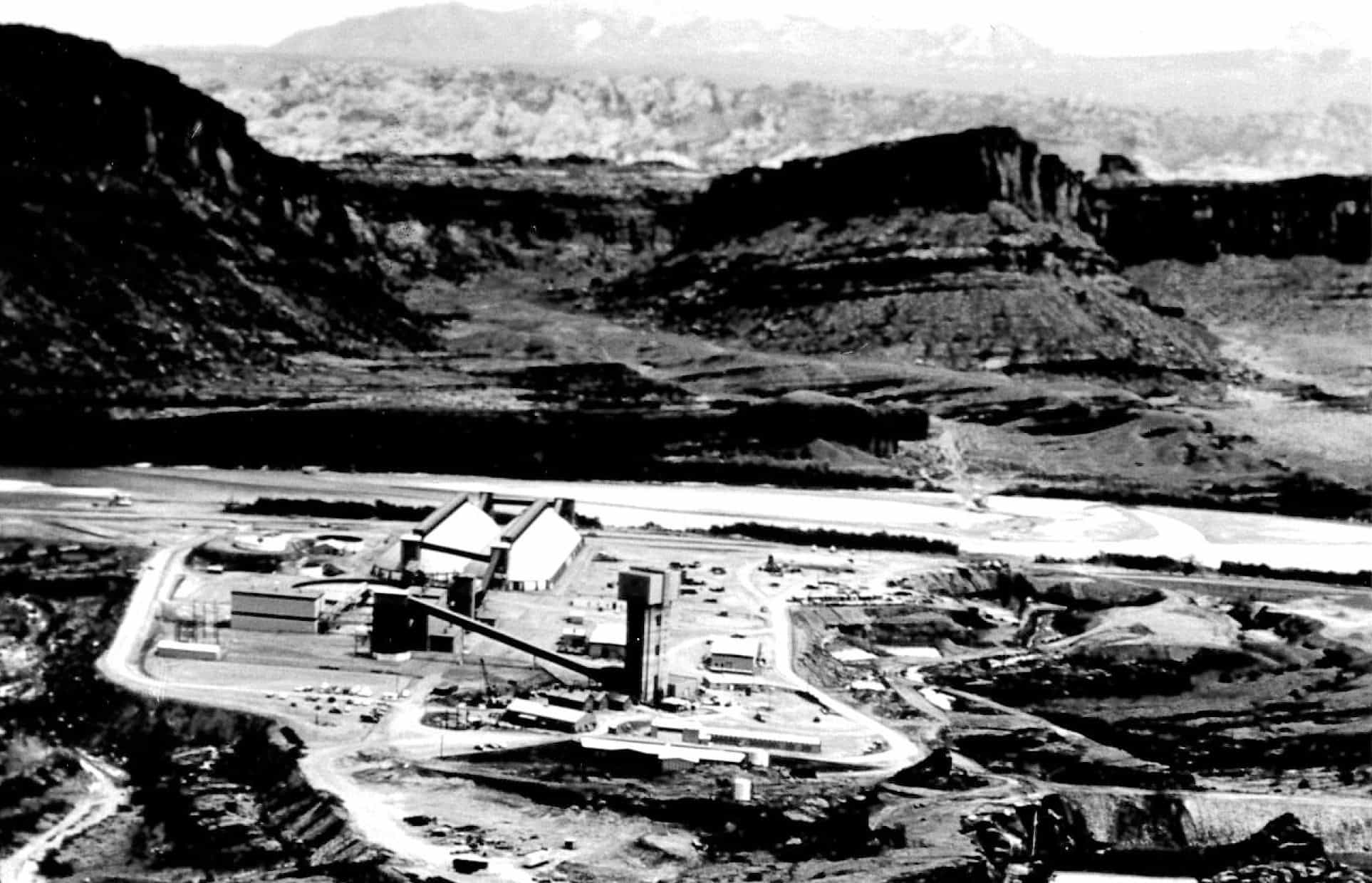Some information may be outdated.

This week marks the 60th anniversary of an explosion at Texas Gulf Sulphur’s potash mine, called “Cane Creek,” along the banks of the Colorado, 24 miles southeast of Moab.
The mine site, now owned by Intrepid Potash Inc., can be seen from the heights of Dead Horse Point State Park: Visitors to the area lay their eyes upon the cerulean evaporation ponds that take up nearly 400 acres of land, starkly distinct from the surrounding red rock.

The day tragedy struck
Disaster struck the workers of Cane Creek only two years after the mine opened in 1961, highlighting the terribly dangerous nature of the work.
At the mine, workers drilled nearly 3,000 feet into the Paradox formation, a rock layer that was deposited between 315 and 310 million years ago, looking for potash seams.
On the afternoon of August 27, 1963, 25 miners were working underground at the Cane Creek Potash Mine when an explosion near the surface buried the crew 2,798 feet below the earth—the force of the explosion was so powerful it knocked one worker stationed at the entrance of the mine off his feet.
The blast began a federal and state-coordinated rescue that lasted three full days.
The Times-Independent reported on August 29, 1963, two days after the incident:
“A violent explosion at the Texas Gulf Sulphur potash mine Tuesday trapped 25 miners 2,700 feet below the surface in one or both of the entries… Miraculously, after nearly twenty hours of frantic search efforts, rescue teams made contact with two of the trapped miners. They were Blake Hannah and Paul C. McKinney, both of Moab.”
The two waited for 19 hours in the heated depths of the shaft for rescue.
After being pulled out of the wreckage, McKinney said, “when we hit the surface that day, well, I can’t explain exactly how I felt, but I was damn glad to get to the surface.”

The other miners who survived the initial blast and were trapped beneath the surface built make-shift airlocks out of curtains to slow the onset of toxic smoke and carbon monoxide.
Nearly two days after the blast, rescuers reached five miners who had exhausted their water supplies and had resorted to drinking the black rusty water straight out of the pipes utilized in the mining operation.
18 miners lost their lives in the incident. The trigger of the explosion was never officially determined, but officials later discovered that methane gas prevalent in the mine had ignited.
Kymberly Mele, whose father Blake Hannah was rescued along with McKinney the morning after the explosion, spent 20 years documenting stories of the mine explosion survivors and rescue teams.
Her book, “Disaster at Cane Creek: An Unforgettable Story Especially For Those Who Lived It,” was published in 2018. Well worth a read into local history.
The Moab Museum is dedicated to sharing stories of the natural and human history of the Moab area. To explore more of Moab’s stories and artifacts, find out about upcoming programs, and become a Member, visit www.moabmuseum.org.
Appreciate the coverage? Help keep local news alive.
Chip in to support the Moab Sun News.





